
Sir Alfred Joseph Hitchcock was an English film director. He is widely regarded as one of the most influential figures in the history of cinema. In a career spanning six decades, he directed over 50 feature films, many of which are still widely watched and studied today. Known as the "Master of Suspense", Hitchcock became as well known as any of his actors thanks to his many interviews, his cameo appearances in most of his films, and his hosting and producing the television anthology Alfred Hitchcock Presents (1955–65). His films garnered 46 Academy Award nominations, including six wins, although he never won the award for Best Director, despite five nominations.

Ingrid Bergman was a Swedish actress. With a career spanning five decades, Bergman is often regarded as one of the most influential screen figures in cinematic history. She won numerous accolades, including three Academy Awards, two Primetime Emmy Awards, a Tony Award, four Golden Globe Awards, BAFTA Award, and a Volpi Cup. She is one of only four actresses to have received at least three acting Academy Awards. In 1999, the American Film Institute recognised Bergman as the fourth greatest female screen legend of Classic Hollywood Cinema.
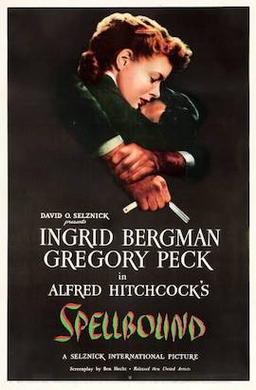
Spellbound is a 1945 American psychological thriller directed by Alfred Hitchcock, and starring Ingrid Bergman, Gregory Peck, and Michael Chekhov. It follows a psychoanalyst who falls in love with the new head of the Vermont hospital in which she works, only to find that he is an imposter suffering dissociative amnesia, and potentially, a murderer. The film is based on the 1927 novel The House of Dr. Edwardes by Hilary Saint George Saunders and John Palmer.

Hume Blake Cronyn Jr. was a Canadian-American actor and writer. He appeared in many stage productions, television and film roles throughout his career, and was nominated for an Academy Award for Best Supporting Actor for his performance in The Seventh Cross (1944).

Notorious is a 1946 American spy film noir directed and produced by Alfred Hitchcock, starring Cary Grant, Ingrid Bergman, and Claude Rains as three people whose lives become intimately entangled during an espionage operation.
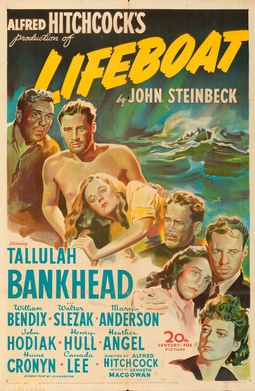
Lifeboat is a 1944 American survival film directed by Alfred Hitchcock from a story by John Steinbeck. It stars Tallulah Bankhead and William Bendix, alongside Walter Slezak, Mary Anderson, John Hodiak, Henry Hull, Heather Angel, Hume Cronyn and Canada Lee. The film is set entirely on a lifeboat launched from a passenger vessel torpedoed and sunk by a Nazi U-boat.

The Paradine Case is a 1947 courtroom drama with elements of film noir set in England, directed by Alfred Hitchcock and produced by David O. Selznick. Selznick and an uncredited Ben Hecht wrote the screenplay from an adaptation by Alma Reville and James Bridie of the 1933 novel by Robert Smythe Hichens. The film stars Gregory Peck, Ann Todd, Alida Valli, Charles Laughton, Charles Coburn, Ethel Barrymore, and Louis Jourdan. It tells of an English barrister who falls in love with a woman who is accused of murder, and how it affects his relationship with his wife.

Michael Charles Gauntlet Wilding was an English stage, television, and film actor. He is best known for a series of films he made with Anna Neagle; he also made two films with Alfred Hitchcock, Under Capricorn (1949) and Stage Fright (1950); and he guest starred on Hitchcock's TV show in 1963. He was married four times, including to Elizabeth Taylor, with whom he had two sons.

Cecil Parker was an English actor with a distinctively husky voice, who usually played supporting roles, often characters with a supercilious demeanour, in his 91 films made between 1928 and 1969.
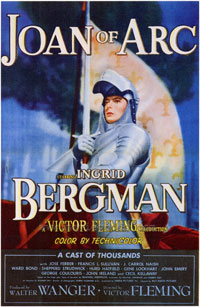
Joan of Arc is a 1948 American hagiographic epic film directed by Victor Fleming, and starring Ingrid Bergman as the eponymous French religious icon and war heroine. It was produced by Walter Wanger and is based on Maxwell Anderson's successful Broadway play Joan of Lorraine, which also starred Bergman, and was adapted for the screen by Anderson himself, in collaboration with Andrew Solt. It is the only film of an Anderson play for which the author wrote the film script. It is the last film Fleming directed before his death in 1949.
Transatlantic Pictures was founded by Alfred Hitchcock and longtime associate Sidney Bernstein at the end of World War II in preparation for the end of Hitchcock's contract with David O. Selznick in 1947. In 1945, Hitchcock and Bernstein were involved with a planned 80-minute documentary on Nazi concentration camps which was eventually shown on television in the US and UK as Memory of the Camps (1985). They planned to produce feature films in both Hollywood and London.
Rope, retitled Rope's End for its American release, is a 1929 English play by Patrick Hamilton. It was said to be inspired by the real-life murder of 14-year-old Bobby Franks in 1924 by University of Chicago students Nathan Leopold and Richard Loeb.

Alfred Hitchcock (1899–1980) was an English director and filmmaker. Popularly known as the "Master of Suspense" for his use of innovative film techniques in thrillers, Hitchcock started his career in the British film industry as a title designer and art director for a number of silent films during the early 1920s. His directorial debut was the 1925 release The Pleasure Garden. Hitchcock followed this with The Lodger: A Story of the London Fog, his first commercial and critical success. It featured many of the thematic elements his films would be known for, such as an innocent man on the run. It also featured the first of his famous cameo appearances. Two years later he directed Blackmail (1929) which was his first sound film. In 1935, Hitchcock directed The 39 Steps; three years later, he directed The Lady Vanishes, starring Margaret Lockwood and Michael Redgrave.

Ingrid Bergman was a multilingual, Academy Award-winning actress born in Stockholm, conversant in Swedish, German, English, Italian, and French. She had been preparing for an acting career all her life. After her mother Frieda died when she was three years old, she was raised by her father Justus Samuel Bergman, a professional photographer who encouraged her to pose and act in front of the camera. As a young woman, she was shy, taller than the average women of her generation, and somewhat overweight. Acting allowed her to transcend these constraints, enabling her to transform herself into a character. She first appeared as an uncredited extra in the film Landskamp (1932), and was accepted into the Royal Dramatic Theatre of Stockholm as a scholarship student in 1933.
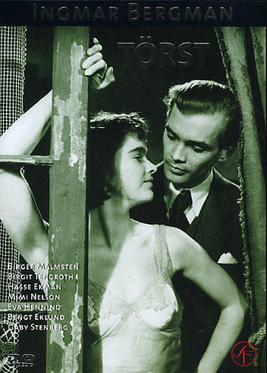
Thirst is a 1949 Swedish drama film directed by Ingmar Bergman. It was released as Three Strange Loves in the United Kingdom.
Alfred Hitchcock's films show an interesting tendency towards recurring themes and plot devices throughout his life as a director.
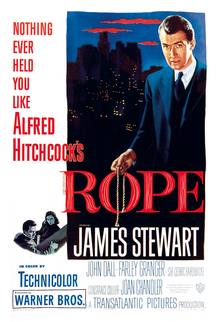
Rope is a 1948 American psychological crime thriller film directed by Alfred Hitchcock, based on the 1929 play of the same name by Patrick Hamilton. The film was adapted by Hume Cronyn with a screenplay by Arthur Laurents.
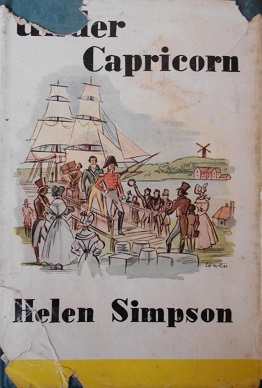
Under Capricorn is a 1937 historical novel by Helen Simpson.
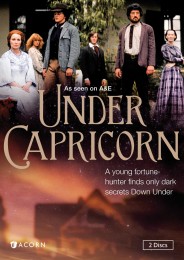
Under Capricorn is a 1983 Australian miniseries based on the novel by Helen Simpson. This had been filmed by Alfred Hitchcock in 1949.
Margaret Robertson was a British script supervisor and personal assistant to Alfred Hitchcock from the 1940s to the 1970s during which time she worked on his early films Under Capricorn (1948) and Stage Fright (1950), before joining his team permanently on Vertigo (1958), working thereafter on all of the director's remaining films.















